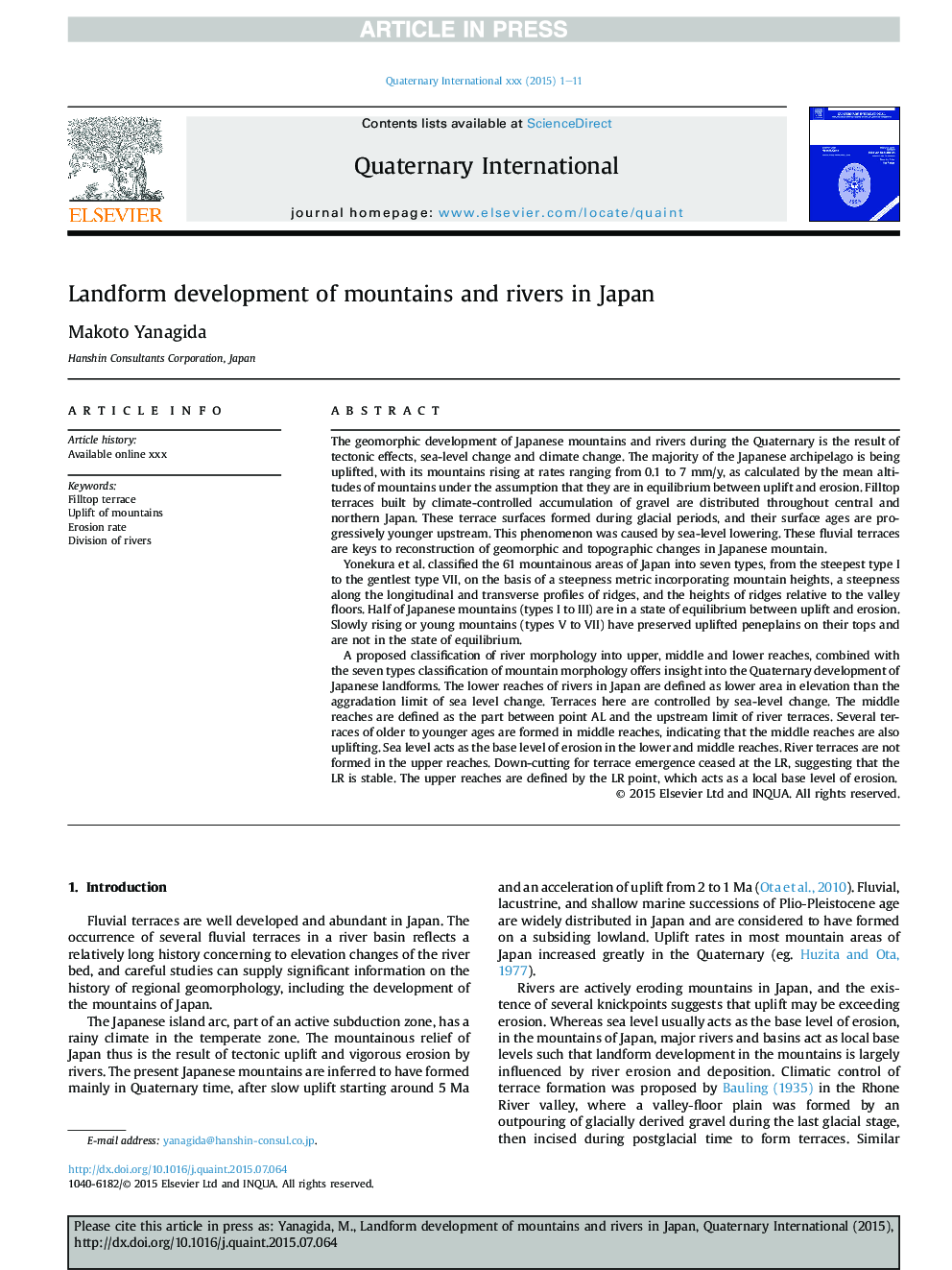| Article ID | Journal | Published Year | Pages | File Type |
|---|---|---|---|---|
| 7451363 | Quaternary International | 2016 | 11 Pages |
Abstract
A proposed classification of river morphology into upper, middle and lower reaches, combined with the seven types classification of mountain morphology offers insight into the Quaternary development of Japanese landforms. The lower reaches of rivers in Japan are defined as lower area in elevation than the aggradation limit of sea level change. Terraces here are controlled by sea-level change. The middle reaches are defined as the part between point AL and the upstream limit of river terraces. Several terraces of older to younger ages are formed in middle reaches, indicating that the middle reaches are also uplifting. Sea level acts as the base level of erosion in the lower and middle reaches. River terraces are not formed in the upper reaches. Down-cutting for terrace emergence ceased at the LR, suggesting that the LR is stable. The upper reaches are defined by the LR point, which acts as a local base level of erosion.
Keywords
Related Topics
Physical Sciences and Engineering
Earth and Planetary Sciences
Geology
Authors
Makoto Yanagida,
